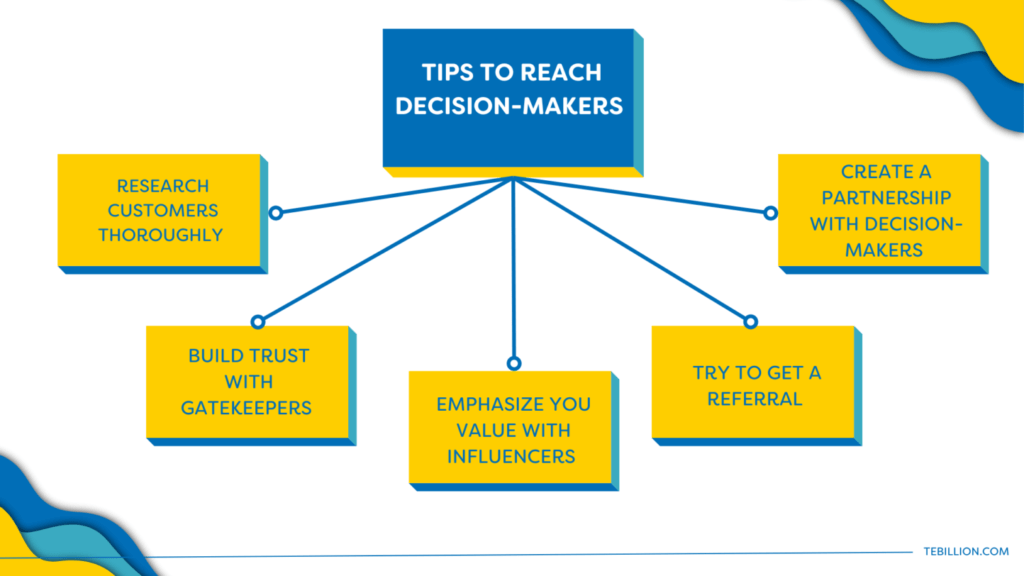
What is the fastest route to get directly to your decision-makers? This is a common question in sales, as the decision-makers hold the key to you winning a deal or not. Gartner found that it is a common sales trend that a representative will have to speak to multiple stakeholders and evaluators before being able to win a sale. In this article, we will look at the route you should take to reach the decision-makers in a sale.
The simplest way to define the decision-makers in a sale is that they are the people that will have the ultimate “yes” or “no” decision that decides the fate of a deal. During complex sales especially, it can be common for a sales representative to be talking to a customer that will not have the final say on whether a deal is agreed upon or not. In this situation, the sales representative must find and identity who the decision makers are as soon as possible.
During a sale, you will usually have three different types of stakeholders:
A gatekeeper is usually an executive assistant, so take a mental note of that the next time you interact with someone that has this job title. Their job will be to learn more about your solution and how it may be able to help their manager. Take the approach that they are the decision maker when explaining how your product or service will help their pain points to best express your value. Moreover, ask them the best way to approach their manager when the time comes.
An influencer is commonly a junior-level employee that is responsible for researching the different solutions for a business and reporting back to the managers. An influencer may not have the final say in the decision, but they will likely be able to have a big impact on the final decision that is made.
The final stakeholder you will come across is the decision maker themselves. They will be responsible for the final decision on if they want to purchase your product or service. It is important for a sales representative to try and get to the decision-maker as quickly as possible
To reach your decision makers in the fastest possible time, follow these tips:

The more research that is conducted on your customers, the easier it will be to pinpoint who the decision-makers are. During B2B sales, gather information from a company’s website, social media platforms and LinkedIn to discover how large the business is, and how many decision-makers and stakeholders there may be.
If you are able to build trust with the gatekeeper of a deal, you can position yourself in a good position to win the deal further in the sales process. Take the time to ask questions about their organisation and pain points to get a better understanding of how you will be able to win the sale in the future. Furthermore, if a good impression is made with a gatekeeper, this will be taken back to the decision-makers.
When you interact with the influencers during a sale, be sure that you emphasize the value of what you are offering. You must establish how the benefits you are offering will be able to help your customer’s pain points. If you map your product or service to their pain points effectively, an influencer is more likely to recommend your solution to the decision-makers.
One of the fastest ways of going directly to the decision-makers of a business is by getting referred by someone. This can be the influencer or gatekeeper of the business, or it can even be a previous customer who is linked to the decision-makers. Ensure you provide great customer service to increase the chance of a referral happening.
Avoid trying to “feature sell” to the decision-makers, and instead focus on creating a partnership as you assist them in fixing their pain points. It is a much more effective strategy benefit selling to decision-makers as they will feel more comfortable making a purchase.
TEB is a sales automation CRM software that will streamline your journey to the decision-makers in your deals with unrivalled data visibility. TEBs unparalleled benefits include:
Book a demo and with just 30 minutes of your time you can see how TEB will remold your approach to customers with accessible customer data.